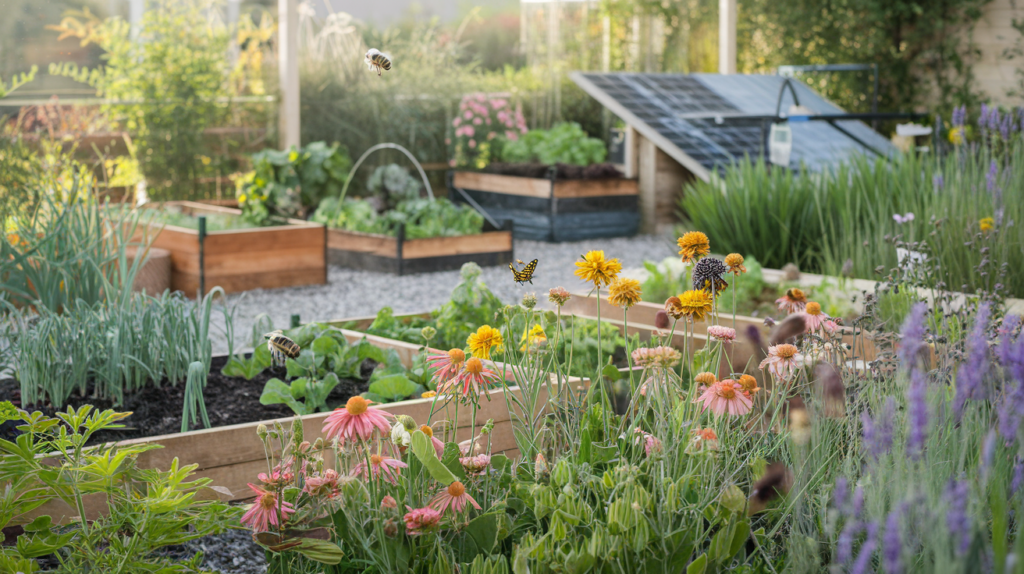Sustainable Gardening Practices: Nurturing Nature with Purpose
Introduction
Gardening is more than a mere pastime—it is a delicate dance between humanity and nature, a symbiotic relationship that, when managed wisely, fosters ecological resilience. In an era dominated by environmental challenges, sustainable gardening emerges as an ethical response to pressing ecological concerns. This article unveils the essence of sustainable gardening practices and how they can fortify biodiversity, conserve resources, and harmonize our green spaces with the natural world.
Understanding Sustainable Gardening
Sustainable gardening revolves around cultivating flora in a manner that preserves environmental balance while minimizing harm. Unlike conventional gardening, which often leans on chemical interventions and resource-heavy methods, sustainable gardening seeks to integrate seamlessly with natural ecosystems. By emphasizing soil health, biodiversity, and resource conservation, this practice fosters long-term ecological prosperity.
Core Principles of Sustainable Gardening
1. Enriching Soil Health
Soil is the foundation of any thriving garden, and nurturing its vitality is paramount. Sustainable gardening underscores practices such as:
- Composting: Converting organic waste into nutrient-rich humus that replenishes soil vitality.
- Mulching: Applying organic material over soil to retain moisture, suppress weeds, and enrich microbial life.
- Crop Rotation: Preventing soil nutrient depletion and curbing pest outbreaks by alternating plant species seasonally.
- Minimal Tillage: Reducing soil disturbance to maintain its structural integrity and microbial ecosystems.

2. Water Conservation Strategies
Water scarcity is an escalating global concern, and sustainable gardening responds with efficient water management techniques:
- Drip Irrigation: Directly delivering water to plant roots, minimizing evaporation and runoff.
- Rainwater Harvesting: Collecting and storing rainwater for garden irrigation.
- Drought-Tolerant Plants: Cultivating species that thrive in arid conditions, reducing dependency on excessive watering.
- Mulching & Ground Cover: Preserving soil moisture while preventing erosion.
3. Organic Pest and Disease Management
Pesticides and synthetic fertilizers disrupt ecosystems, but nature offers potent alternatives:
- Companion Planting: Strategically pairing plants to naturally repel pests and enhance growth.
- Beneficial Insects: Encouraging pollinators and predatory species like ladybugs to manage pest populations.
- Neem Oil & Natural Sprays: Utilizing biodegradable solutions to combat infestations without harming the environment.
- Crop Diversification: Preventing the spread of diseases through varied plant species.
4. Biodiversity & Native Plant Cultivation
Introducing a wide range of native plant species strengthens ecological balance:
- Pollinator-Friendly Gardens: Growing nectar-rich flowers to sustain bees, butterflies, and birds.
- Hedgerows & Wild Patches: Creating habitats that support local wildlife.
- Native Plant Integration: Selecting flora that adapts naturally to local soil and climate conditions, reducing the need for artificial maintenance.
5. Sustainable Landscaping & Zero-Waste Gardening
A truly sustainable garden embraces waste minimization and eco-friendly landscaping:
- Permaculture Design: Mimicking natural ecosystems to achieve self-sufficiency.
- Upcycling & Repurposing: Transforming discarded materials into functional garden structures.
- No-Dig Gardening: Cultivating plants without disturbing soil layers, enhancing fertility and carbon sequestration.
- Green Mulch & Cover Crops: Preventing soil erosion while fixing nitrogen levels naturally.
The Role of Technology in Sustainable Gardening
While gardening remains an age-old tradition, technology has revolutionized sustainable practices:
- Smart Irrigation Systems: Automated watering based on soil moisture levels.
- Soil Health Monitors: Sensors that analyze pH, moisture, and nutrient composition.
- Composting Machines: Accelerated decomposition for organic waste recycling.
- AI & Gardening Apps: Digital tools offering personalized sustainability insights.
The Societal and Environmental Benefits
Adopting sustainable gardening transcends individual rewards; it contributes to broader ecological and social well-being:
- Carbon Footprint Reduction: Gardens act as carbon sinks, mitigating climate change.
- Enhanced Urban Green Spaces: Transforming cities into greener, healthier environments.
- Mental & Physical Wellness: Gardening fosters relaxation and physical activity.
- Community Engagement: Shared gardening initiatives strengthen communal bonds and food security.
Conclusion: Cultivating a Greener Tomorrow
Sustainable gardening is not merely a trend—it is a necessity for an environmentally resilient future. By prioritizing soil health, conserving water, embracing biodiversity, and leveraging innovative techniques, gardeners can become stewards of sustainability. Whether tending to a backyard oasis or nurturing a sprawling green space, each mindful act cultivates a harmonious world where nature and humanity coexist in equilibrium. Let us sow the seeds of sustainability today for a flourishing tomorrow.